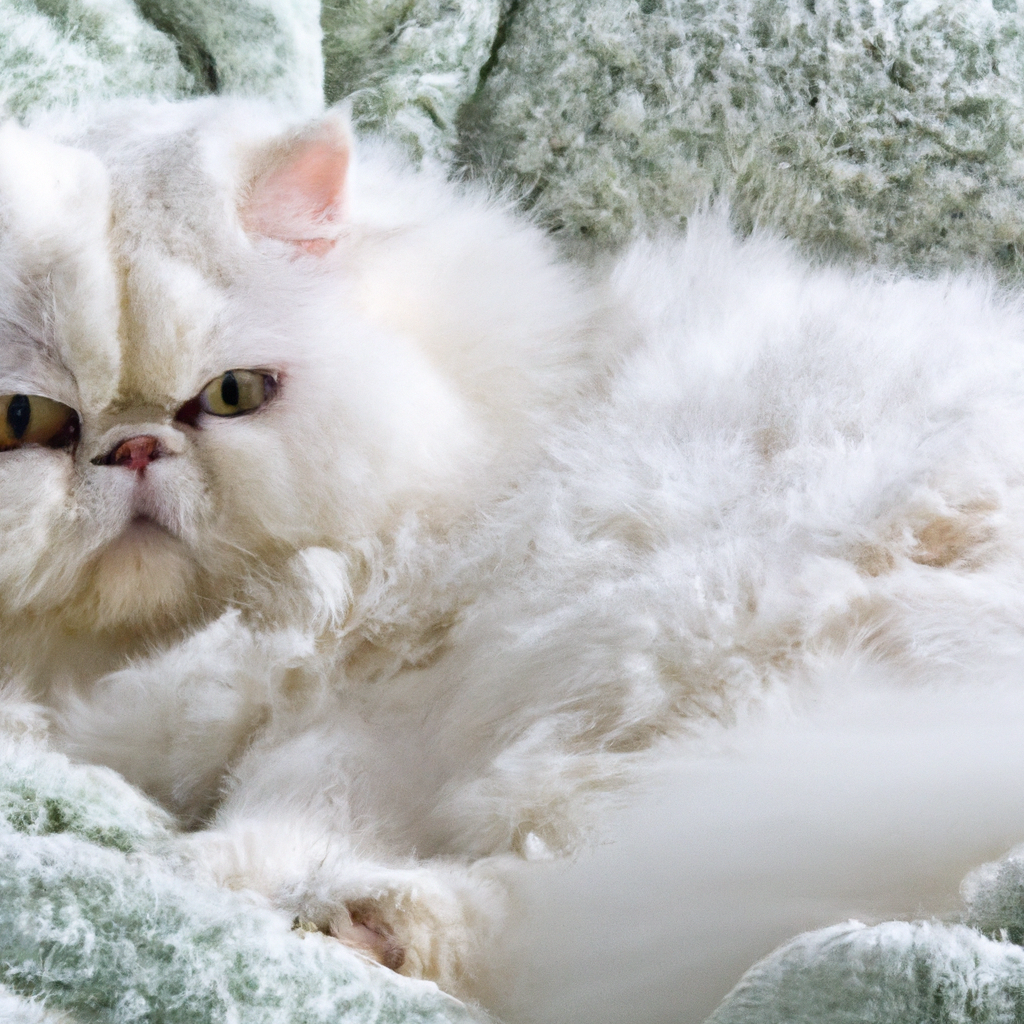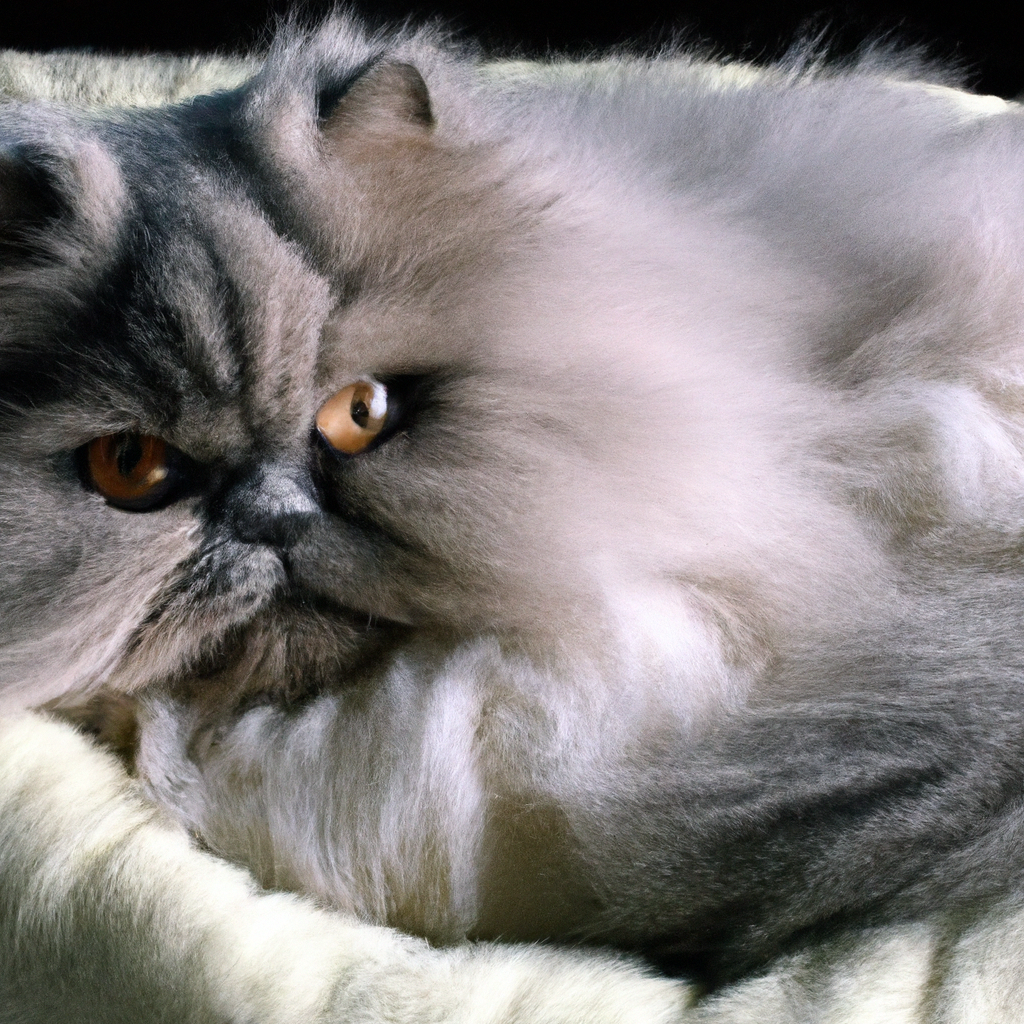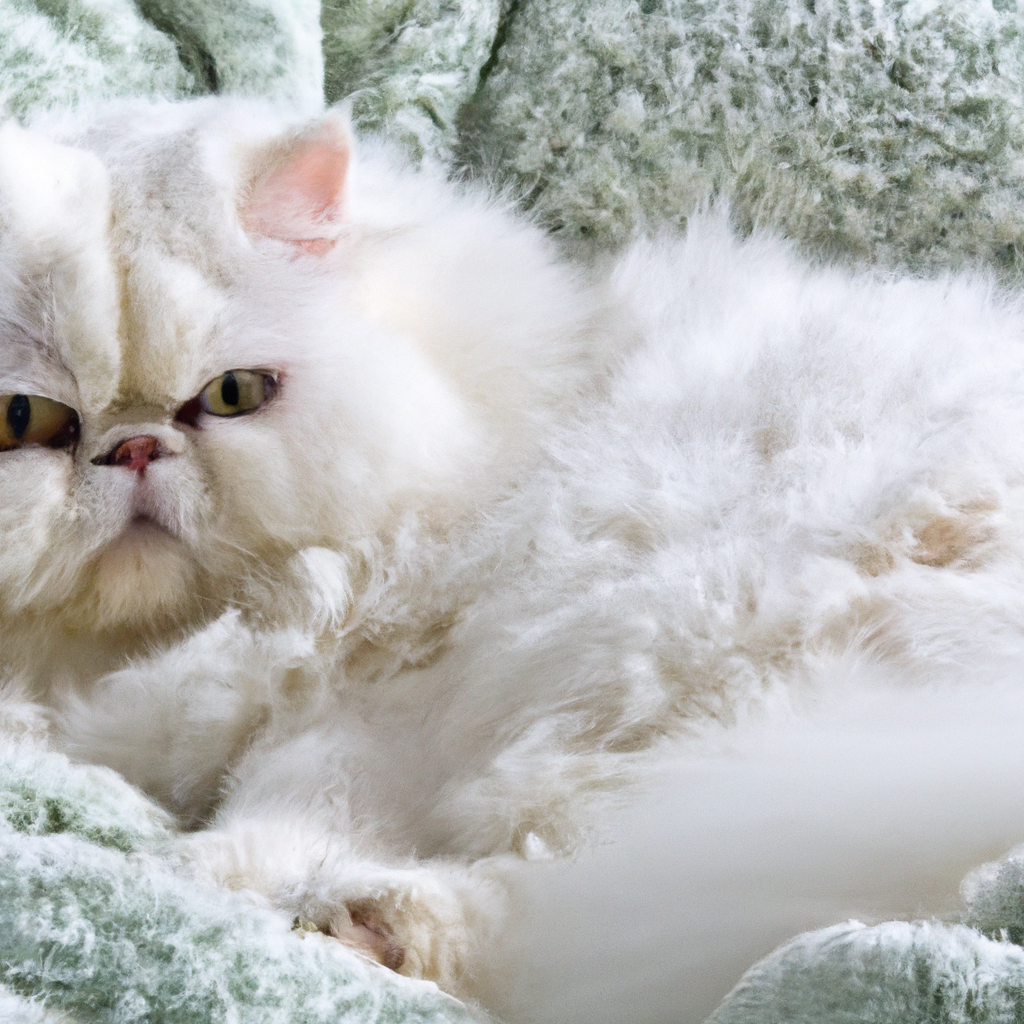If you’re a proud owner of a Persian cat, you know how important it is to keep them warm and cozy, especially during cold weather. Persian cats have long, luxurious fur that requires extra care and attention to keep them comfortable. In this article, we will explore the best ways to protect your Persian cat from the chill and ensure they stay snug as a bug in a rug. From grooming tips to creating the perfect indoor environment, we’ve got you covered. So, grab a cup of tea, curl up with your furry friend, and let’s discover how to keep your Persian cat warm and cozy during those chilly days.
Preparing Your Home for Cold Weather
Insulation
When it comes to preparing your home for cold weather, insulation plays a crucial role in keeping the warmth indoors and preventing heat loss. Proper insulation in your walls, attic, and floors can significantly reduce your energy consumption and keep your home cozy during the winter months. Consider adding insulation to areas that are prone to drafts, such as windows and doors.
Draft-proofing
Draft-proofing your home is another important step to take in preparation for cold weather. By identifying and sealing any gaps or cracks in your windows, doors, and walls, you can prevent cold drafts from entering your living spaces. This not only helps to keep your home warm but also reduces your energy bills. Use weatherstripping, door sweeps, and caulking to seal these openings effectively.
Heating systems
Having an efficient heating system in place is essential when it comes to keeping your home warm and comfortable during cold weather. Make sure to have your heating system serviced before the winter months to ensure it is in proper working condition. Consider investing in energy-efficient options, such as a programmable thermostat or a zone heating system, to efficiently regulate the temperature in different areas of your home.
Creating Cozy Sleeping Areas
Choosing warm bedding
Your Persian cat will greatly appreciate a cozy sleeping area during the colder months. Choose warm and comfortable bedding options for your feline friend, such as blankets or a heated cat bed. Opt for materials that provide insulation and retain heat, such as fleece or plush fabrics. Make sure to wash the bedding regularly to maintain cleanliness and freshness.
Providing heated beds
If you want to go the extra mile in providing warmth for your Persian cat, consider investing in a heated cat bed. These beds have built-in heating elements that provide a constant and gentle warmth, perfect for chilly nights. Ensure that the heated bed is safe and designed specifically for pets, with temperature controls and automatic shut-off features.
Using blankets and pillows
In addition to a cozy bed, you can further enhance your Persian cat’s sleeping area by adding extra blankets and pillows. These additional layers of warmth provide insulation and create a comfortable and inviting environment. Your cat can burrow and snuggle into the blankets, regulating their body temperature and ensuring a restful sleep.

Managing Indoor Temperature
Optimal temperature range
It is important to maintain an optimal temperature range in your home to keep your Persian cat comfortable during the cold weather. The ideal temperature for your cat is around 68 to 75 degrees Fahrenheit (20 to 24 degrees Celsius). This range provides warmth without being too hot or too cold for your feline companion.
Monitoring and adjusting
Regularly monitor the temperature in your home and make adjustments accordingly. Use a digital thermometer to check the temperature in different areas, especially where your cat spends most of its time. If needed, adjust your thermostat to maintain a consistent and comfortable temperature throughout the day and night.
Using space heaters
In specific areas of your home, such as drafty rooms or corners, you may consider using space heaters to provide additional warmth. However, it is important to use caution when using space heaters around pets. Choose models with safety features such as tip-over shut-off switches and automatic shut-off timers. Keep the space heater away from your cat’s reach and follow safety guidelines to prevent any accidents.
Protecting Against Cold Drafts
Identifying draft sources
To effectively protect your Persian cat from cold drafts, it is essential to identify the sources of these drafts in your home. Common areas for drafts include windows, doors, and gaps in walls or floors. Carefully inspect these areas and feel for any cold air coming through. Remember to check both inside and outside your home for potential draft sources.
Insulating windows and doors
Once you have identified the draft sources, take steps to insulate your windows and doors. Use weatherstripping or adhesive weather seals to close any gaps and prevent cold air from entering. Consider using insulated curtains or window film to further enhance the insulation. For doors, install door sweeps or use draft stoppers to seal the bottom gap.
Using door draft stoppers
Door draft stoppers are a simple yet effective solution for preventing cold drafts from entering your home. These long, cylindrical cushions are placed along the bottom of the door, creating a seal to block out drafts. Choose draft stoppers that are durable and can withstand regular use. They come in various designs, so you can find a style that complements your home decor.

Grooming for Winter
Brushing their coat
Regular grooming is important year-round for Persian cats, but it becomes even more crucial during the winter months. Brushing your cat’s coat helps to remove loose fur and prevent matting, allowing for better air circulation and insulation. It also promotes blood circulation and distributes natural oils, which help to keep their coat shiny and moisturized.
Trimming excess fur
Persian cats have long and luxurious coats, but during winter, excessive fur can become a hindrance. Consider scheduling regular grooming sessions to trim down any excess fur, especially around the belly and hindquarters. This will help your cat maintain better mobility and prevent matting and discomfort.
Protecting paws and ears
Just like humans, cats can experience dry and cracked paws during the winter months. To protect your Persian cat’s paws, consider using pet-safe paw balms or moisturizers. Additionally, keep their ears clean and free from excessive wax buildup by gently wiping them with a damp cloth. This will prevent discomfort and potential ear infections.
Tips for Outdoor Supervision
Limiting outdoor time
During colder weather, it is important to limit your Persian cat’s outdoor time to prevent them from being exposed to harsh conditions. Cats can easily get cold and uncomfortable, especially if they are not acclimated to colder temperatures. Provide supervised outdoor time in shorter intervals and monitor their behavior closely to ensure they are safe and warm.
Providing shelter
If your Persian cat insists on spending time outdoors, provide them with a warm and insulated shelter. This can be a cozy outdoor cat house or a designated area with blankets and bedding. Ensure that the shelter is raised off the ground to prevent cold drafts from entering.
Using cat jackets
Cat jackets or sweaters can be a useful accessory to provide additional warmth and insulation during outdoor activities. Make sure to choose a jacket that fits snugly and does not restrict your cat’s movement. It is important to prioritize their comfort and ensure they can still walk, jump, and groom themselves while wearing the jacket.
Maintaining a Balanced Diet
Adjusting feeding amounts
During colder weather, your Persian cat may require slightly more food to maintain their energy and body heat. Monitor their weight and body condition carefully and consider adjusting their feeding amounts accordingly. Consult with your veterinarian to determine the appropriate portion sizes and ensure a balanced diet that meets their nutritional needs.
Choosing warming food options
Incorporating warming food options into your Persian cat’s diet can help keep them comfortable during the colder months. Consider feeding them warm or room temperature wet food, as it can provide extra warmth and added hydration. You can also mix in some warm water or broth with their regular dry food to make it more enticing.
Supplementing with vitamins
To support your Persian cat’s overall health and immune system during the winter, consider supplementing their diet with appropriate vitamins and supplements. Consult with your veterinarian to determine which supplements are suitable for your cat’s specific needs. Vitamin E and Omega-3 fatty acids, for example, can help promote healthy skin and coat.
Encouraging Physical Activity
Indoor exercise options
During cold weather, it may not be safe or comfortable for your Persian cat to engage in extensive outdoor activities. Provide indoor exercise options to keep them physically active and mentally stimulated. Use interactive toys such as teaser wands, puzzle feeders, or laser pointers to encourage play and movement.
Interactive toys and games
Engage your Persian cat in interactive games and play sessions to keep them entertained and active. Use toys that mimic prey-like movements, such as small mice or feathery toys. Rotate the toys regularly to keep their interest and prevent boredom.
Creating a play area
Designate a specific area in your home as a play zone for your Persian cat. Fill it with scratching posts, climbing trees, and various toys. This dedicated play area will provide them with opportunities for exercise and exploration, and help prevent them from getting into mischief or feeling cooped up during the colder months.
Recognizing Signs of Cold
Shivering
Shivering is a common sign that your Persian cat may be feeling cold. Pay attention to any visible trembling or shaking, especially if they are seeking warmth or curling up to conserve body heat. If you notice persistent shivering, it is a sign that your cat is not adequately warm, and you may need to take additional steps to provide comfort.
Seeking warm spots
Cats instinctively seek out warm spots when they are feeling cold. If you notice your Persian cat constantly seeking out heat sources, such as sitting near radiators or snuggling close to heat vents, it is a sign that they may be feeling the cold. Provide additional warmth and comfort in their sleeping areas to alleviate their discomfort.
Behavioral changes
Changes in behavior, such as increased lethargy, decreased appetite, or withdrawal, can indicate that your Persian cat is feeling the effects of the cold weather. Monitor their behavior closely and observe if there are any noticeable changes in their activity levels or overall demeanor. If you notice any concerning changes, it is advisable to consult with your veterinarian.
Seeking Veterinary Advice
When to visit the vet
In certain situations, it may be necessary to seek veterinary advice regarding your Persian cat’s health and well-being during cold weather. If you notice any unusual symptoms or signs of distress, such as prolonged shivering, difficulty breathing, excessive coughing, or changes in bathroom habits, it is important to consult with your veterinarian promptly.
Health issues in cold weather
Cold weather can pose certain health risks for Persian cats, such as respiratory infections, frostbite, or hypothermia. These conditions can be serious and require immediate medical attention. It is essential to be aware of the potential risks and take proactive measures to protect your cat’s health, including regular vet check-ups and vaccinations.
Vaccinations and preventatives
Maintaining your Persian cat’s vaccinations and preventive medications up to date is crucial, especially during the cold weather months. Consult with your veterinarian to ensure that your cat is protected against common illnesses and parasites that can be more prevalent during this time. Regular vaccinations and preventive treatments can help keep your cat healthy and disease-free.
In conclusion, preparing your home for cold weather, creating cozy sleeping areas, managing indoor temperature, protecting against cold drafts, grooming for winter, providing outdoor supervision, maintaining a balanced diet, encouraging physical activity, recognizing signs of cold, and seeking veterinary advice are all vital aspects of keeping your Persian cat warm and cozy during the colder months. By taking these measures, you can ensure the health, comfort, and well-being of your beloved feline friend throughout the winter season.
